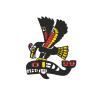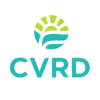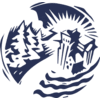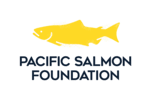By Peter W. Rusland, Cowichan News Leader Pictorial, May 05, 2012
 Two-dozen great blue herons fed on Cowichan Bay’s low-tide critters while regional brass got $370,000 Saturday to help make the bay’s shellfish edible for everyone by 2020.
Two-dozen great blue herons fed on Cowichan Bay’s low-tide critters while regional brass got $370,000 Saturday to help make the bay’s shellfish edible for everyone by 2020.
"This is phenomenal," local Meghan Loop said of the federal Gas Tax Fund money — presented at the Cowichan Estuary Nature Centre by B.C.’s Minister of Community, Sport and Culture Ida Chong – to help save the watershed’s groundwater through pollution detection and prevention.
The $370,00 will also help manage summer and winter flows along the Cowichan River feeding the estuary.
"This is one of the largest estuaries on the island with lots of significance over time — to have it so degraded is quite a tragedy," she said sewage and other waste dumping in the past generation or two.
"To restore the bay and bring awareness show’s what it was, and can be again.
"It’s important to get kids connected to things like this."
That’s why children such as Cleo McConkey, 4, and Hanna Chapman, 5, were busy during the bay’s Low-Tide Day — run from Cowichan Tribes’ Kil-Pah-Las Beach — to find and look at sea life such as a squirming ghost shrimp found by senior Eric Marshall.
Biologist Dr. Bill Austin welcomed the funding to find pollution points along the Cowichan River that empties into the bay and fouls sea life.
"There’s still lots of clams down here, and pollution can even be flushed out with fresh water, like they do in Spain," he told the News Leader Pictorial.
Chong was proud of pumping federal funds to communities through the Union of B.C. Municipalities.
"Gordon Campbell (former premier) said local governments know what the best projects are.
"The gas tax is all about clean air, clean water, and reducing our green-house gases."
It was ironic to regional chairman Rob Hutchins that gas revenues help the environment.
"Now when people complain about the price of fuel, they’re helping the Cowichan watershed."
During the next two years, some of Saturday’s federal purse will be used to study the river’s sources of septage and other pollution, then seek stopping action from all levels of government.
Rodger Hunter of the Cowichan Watershed Board noted the river’s diminished rank as one of B.C.’s fish-producing rivers.
That degradation was partly due to boat-traffic and logging-boom disruption of the bay’s vital herring habitat in eelgrass and kelp beds, he explained.
Cowichan Tribes’ elders such as Chief Harvey Alphonse are also eager to restore Tribes’ traditional seafood harvesting in the bay, Hunter noted.
"This used to be the Natives’ breadbasket here."
And it can be again, by finding then snuffing pollution and habitat villains, he and Hutchins signalled.
"We can no longer use these bodies of water as cesspools," said Hutchins, who’s mayor of Ladysmith.
"There’s been an awakening that nature can’t replenish itself from these levels of pollution."
The Cowichan Watershed Board meets May 10 at 6 p.m. in Hecate Park’s new estuary centre [CORRECTION: Meeting has been moved just down the road to the Cowichan Bay Maritime Centre, 1761 Cowichan Bay Road] where Fisheries’ spokesman Bob Harding will speak about the Cowichan watershed.
For more, call 250-701-0143.
 Email
Email



